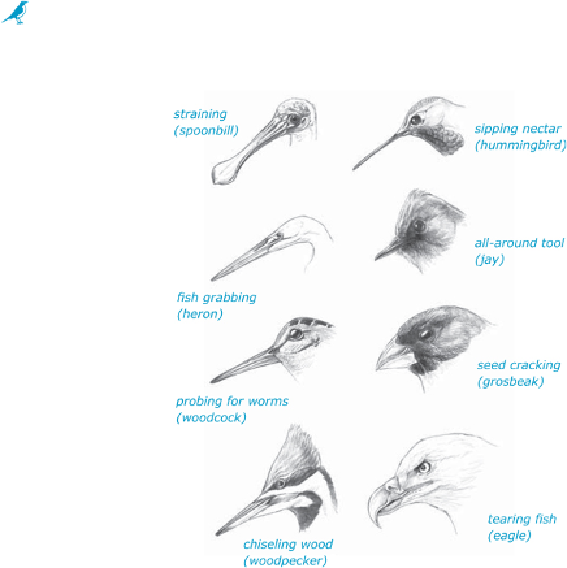Biology Reference
In-Depth Information
That's what nineteenth-century ornithologist
Elliot Coues called the avian skull.
Allbirdshavebillsorbeaks(synonymsforthesamestructure),buttheydisplayanamaz-
ing variety of adaptations to the environment.
Some ocean birds, such as albatrosses, have huge salt glands that excrete the salt
through exceptionally long nostrils, which give albatrosses, petrels, and shearwaters the
name “tubenoses.” Excess salt can dribble out, as it does for loons, or it can be forcibly
blown out through these specialized nostrils.
Somelandbirds,suchasBudgerigars(ourfamiliar pet“parakeets” or“budgies”),also
have large salt glands. Wild Budgerigars, native to the interior deserts of Australia, drink
from waterholes filled with brine water.
Digestive Issues
Q I once found a baby robin hopping on my lawn. There was a cat around so I
picked the robin up and put it in a shrub where it would be safer. While I was car-
rying it, it opened its beak, begging for food. I was surprised that the inside of its
mouth was bright yellow. Even weirder, the roof of the mouth had a most bizarre



